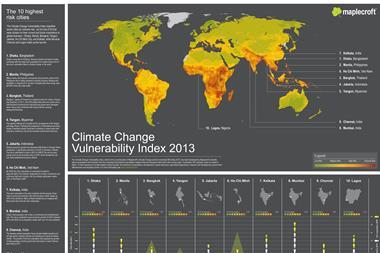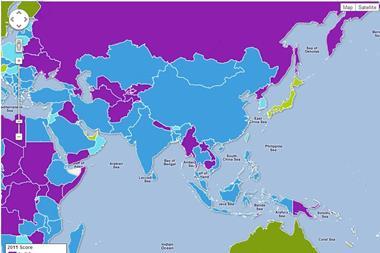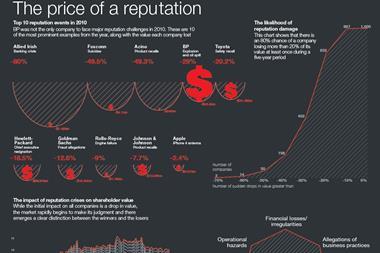Climate change is most likely to strike in the countries least able to cope with the effects, according to Maplecroft’s new index
T hose countries that produce the least by way of greenhouse gas emissions are most vulnerable to the effects of climate change, according to new research.
The huge earthquake and ensuing tsunami that struck the east coast of Japan in March is the latest horrifying example of the power of Mother Nature. Fortunately for its citizens, Japan has the resources to assist the victims. Cruelly, according to Maplecroft’s Climate Change Vulnerability Index, the countries most exposed to climate-related catastrophes are those least able to cope.
Bangladesh and India top the table among other countries at most risk, characterised by high levels of poverty, dense populations and reliance on drought-prone agricultural land. India’s massive population and increasing demand for scarce resources make it particularly sensitive to climate change.
The industrial giants of China, Brazil and Japan are all listed as ‘high risk’. Wealthy European nations make up the ‘low risk’ countries. Russia, the USA, Germany, France and the UK are all ‘medium risk’.
The National Centre for Atmospheric Research recently highlighted America’s growing threat of severe and prolonged drought in the coming decades. In its Strategic Defence and Security Review, the UK also warned that climate change represents a potential threat to its security.
Rising climate risks could also hit foreign investments into vulnerable countries, warned a Maplecroft environmental analyst.
“Organisations with operations or assets in these countries will become more exposed to associated risks, such as climate-related natural disasters, resource security and conflict,” said Maplecroft’s spokesman. “Understanding climate vulnerability will help companies make their investments more resilient to unexpected change.” SR
Countries at risk of adverse climate change effects

Rank Country Category
1 Bangladesh extreme
Maplecroft rates Bangladesh as the country most at risk because of extreme levels of poverty and a high dependency on agriculture, while its government has the lowest capacity of all countries to adapt to predicted changes in the climate. In addition, Bangladesh has a high risk of drought and the highest risk of flooding.
2 India extreme
Climate vulnerability could adversely affect India’s appeal as a destination for foreign investment in coming decades. Almost the whole of India has a high or extreme degree of sensitivity to climate change, according to Maplecroft. This is compounded by a high level of poverty and agricultural dependency, it added.
3 Madagascar extreme
4 Nepal extreme
5 Mozambique extreme
6 Philippines extreme
7 Haiti extreme
8 Afghanistan extreme
9 Zimbabwe extreme
10 Myanmar extreme
Spotlight on Australia
Vast swathes of Australia are rated at ‘extreme risk’ of water stress because demand is exceeding 90% of total renewable water resources. The issue is particularly pressing in the south of the country. Nearly one million sq km of land is at ‘extreme risk’ of water stress, which represents 12.8% of the total land area, warned Maplecroft. High demand for water from the industrial and mining sectors is compounding the problem.
Downloads
Risk Atlas: Environmental Risk
PDF, Size 1.98 mb



















